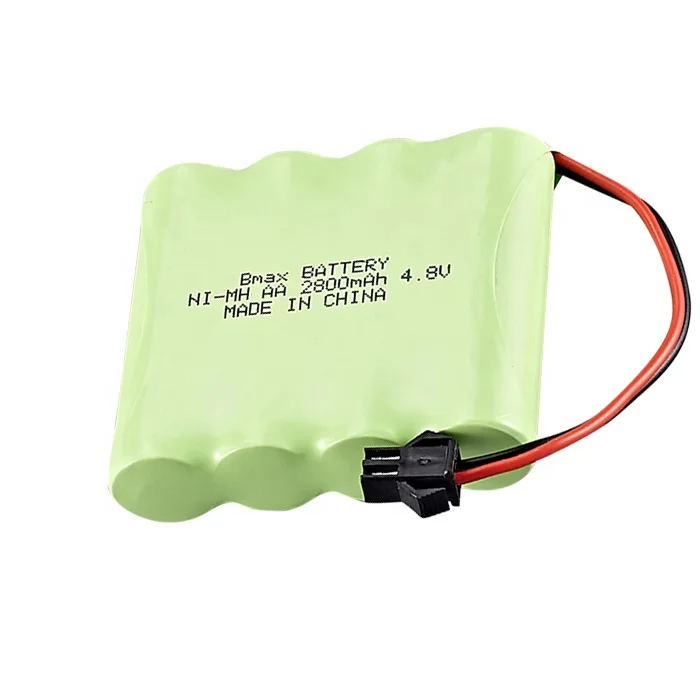Introduction:
In today’s world of portable electronics, hybrid vehicles, and renewable energy systems, nickel-metal hydride (NiMH) batteries have become a prevalent choice for powering a wide range of devices. However, like all rechargeable batteries, NiMH batteries are subject to capacity degradation over time, impacting their performance and longevity. In this comprehensive guide, we’ll delve into the factors influencing capacity degradation in NiMH batteries, explore how it occurs over time, and provide practical tips for prolonging battery lifespan.
Understanding NiMH Battery Technology:
Before delving into capacity degradation, let’s first understand the basic structure and chemistry of NiMH batteries. NiMH batteries consist of a positive electrode (nickel oxyhydroxide), a negative electrode (metal hydride), and an alkaline electrolyte (potassium hydroxide). During charging, nickel hydroxide is oxidized at the positive electrode, while hydrogen ions and electrons are absorbed at the negative electrode, forming a metal hydride.
NiMH batteries offer several advantages over other rechargeable battery chemistries, including higher energy density than nickel-cadmium (NiCd) batteries, improved environmental friendliness, and reduced risk of memory effect. These characteristics make NiMH batteries a popular choice for applications such as consumer electronics, power tools, hybrid vehicles, and renewable energy storage systems.
Capacity Degradation in NiMH Batteries:
Capacity degradation refers to the gradual loss of a battery’s ability to store and deliver energy over time. Several factors contribute to capacity degradation in NiMH batteries, including:
- Chemical Reactions: During charge-discharge cycles, chemical reactions occur within the battery that lead to degradation of the electrode materials and electrolyte. Over time, these reactions can cause irreversible changes to the structure and composition of the electrodes, resulting in reduced capacity and performance.
- Cycle Life: NiMH batteries have a limited number of charge-discharge cycles before experiencing significant capacity degradation. Each cycle causes wear and tear on the electrodes and electrolyte, leading to gradual deterioration of battery performance. The cycle life of NiMH batteries typically ranges from 500 to 2000 cycles, depending on usage patterns and environmental factors.
- Self-discharge: NiMH batteries have a higher self-discharge rate compared to some other rechargeable battery chemistries. When not in use, NiMH batteries lose their charge over time due to internal chemical reactions, resulting in capacity loss. While modern NiMH batteries have reduced self-discharge rates compared to older generations, they still require periodic recharging to maintain optimal performance.
- Temperature: High temperatures can accelerate chemical reactions within the battery, leading to increased capacity degradation. Exposure to elevated temperatures, such as during charging, discharging, or storage in hot environments, can cause irreversible damage to the electrode materials and electrolyte, reducing battery lifespan.
- Overcharging and Overdischarging: Overcharging or overdischarging NiMH batteries can accelerate capacity degradation and reduce battery lifespan. Overcharging can cause electrolyte decomposition, gas evolution, and electrode degradation, while overdischarging can induce irreversible structural changes and capacity loss. It’s essential to use a compatible charger and avoid extreme charging or discharging conditions to prolong battery lifespan.
Practical Tips for Prolonging NiMH Battery Lifespan:
While capacity degradation is inevitable in NiMH batteries, there are several practical tips for prolonging battery lifespan and minimizing capacity loss over time:
- Proper Charging Practices: Use a compatible charger specifically designed for NiMH batteries and follow manufacturer recommendations for charging voltage and current settings. Avoid overcharging or undercharging NiMH batteries, as this can accelerate capacity degradation and reduce battery lifespan.
- Manage Discharge Cycles: Avoid deep discharges whenever possible and aim to keep NiMH batteries within the recommended state of charge range (typically 40-80% SOC) to minimize stress on the electrodes and electrolyte. Shallow discharges and moderate charge-discharge rates can help prolong battery life and maintain performance.
- Temperature Control: Store NiMH batteries in a cool, dry environment away from direct sunlight and extreme temperatures. Avoid exposing batteries to high temperatures during charging, discharging, or storage, as this can accelerate capacity degradation and reduce battery lifespan.
- Regular Maintenance: Periodically inspect NiMH batteries for signs of physical damage, leakage, or corrosion, and replace any damaged or defective batteries promptly. Clean battery contacts and terminals with a soft, dry cloth to ensure good electrical connections and prevent voltage drop.
Conclusion:
In conclusion, capacity degradation is a natural phenomenon that occurs in NiMH batteries over time due to chemical reactions, cycle life, self-discharge, temperature, and charging practices. While it’s impossible to completely prevent capacity loss, practical tips such as proper charging practices, managing discharge cycles, temperature control, and regular maintenance can help prolong NiMH battery lifespan and minimize capacity degradation.
By understanding the factors influencing capacity degradation in NiMH batteries and implementing best practices for battery management, users can ensure reliable performance and maximize the lifespan of their rechargeable batteries. Whether powering consumer electronics, hybrid vehicles, or renewable energy systems, NiMH batteries can provide years of dependable service with proper care and maintenance.


